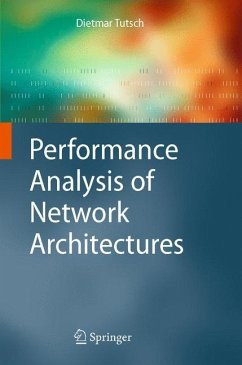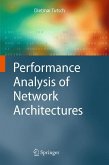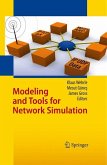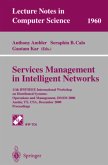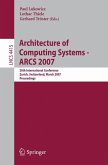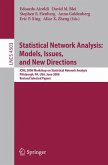Parallel and distributed computer systems are built to close the gap between the demand for high-performance computing and the computing power available using standalone single-processor machines. Traffic in networks connecting such systems is typically characterized by its distribution in time and space. Three approaches can be applied to determine the related network performance: measurement, simulation, and mathematical methods.
Dietmar Tutsch first introduces various network architectures that are widely proposed for parallel and distributed systems as well as for systems-on-chips including multicore processors. Their advantages and drawbacks are compared. Then, he gives an exhaustive survey of the available modeling techniques, including mathematical methods like Markov chains and Petri nets, and simulation methods. The main problems in modeling networks are that models are usually too large to be handled by a computer system, and, due to model complexity, model development is very time consuming. As a solution, the author systematically presents methods for complexity reduction, thus reducing the development time considerably. In addition, he presents a strategy for developing a generator for automatic model derivation. Finally, both simulation and mathematical models are applied to two major examples, a cellular network and a multistage interconnection network.
This monograph mainly targets researchers in network architecture design and performance analysis, both from industry and academia. In addition, graduate students specializing in these areas will find a comprehensive overview of this field.
Hinweis: Dieser Artikel kann nur an eine deutsche Lieferadresse ausgeliefert werden.
Dietmar Tutsch first introduces various network architectures that are widely proposed for parallel and distributed systems as well as for systems-on-chips including multicore processors. Their advantages and drawbacks are compared. Then, he gives an exhaustive survey of the available modeling techniques, including mathematical methods like Markov chains and Petri nets, and simulation methods. The main problems in modeling networks are that models are usually too large to be handled by a computer system, and, due to model complexity, model development is very time consuming. As a solution, the author systematically presents methods for complexity reduction, thus reducing the development time considerably. In addition, he presents a strategy for developing a generator for automatic model derivation. Finally, both simulation and mathematical models are applied to two major examples, a cellular network and a multistage interconnection network.
This monograph mainly targets researchers in network architecture design and performance analysis, both from industry and academia. In addition, graduate students specializing in these areas will find a comprehensive overview of this field.
Hinweis: Dieser Artikel kann nur an eine deutsche Lieferadresse ausgeliefert werden.
From the reviews: "This book by Tutsch studies the topological characteristics of different network architectures, and provides a detailed analysis of network performance based on mathematical methods, such as Markov chains and Petri nets. ... this book is primarily intended for researchers interested in network performance modeling. ... In summary, this book is an excellent starting point for readers that want to apply simulation techniques and mathematical methods for measuring network performance." (Diego R. Llanos, ACM Computing Reviews, Vol. 49 (4), April, 2008) "The performance analysis of network architectures is a highly technical topic, one that needs good illustration. ... Tutsch has written a sound book on the performance analysis of network architectures with good analytical treatment. Performance research engineers for network architectures would do well to go through this volume. ... this book is certainly worthy of a place on a performance researcher's bookshelf. The book is well presented and draws on the author's experience." (Shantanu Bhattacharya, ACM Computing Reviews, Vol. 49 (3), March, 2008)
